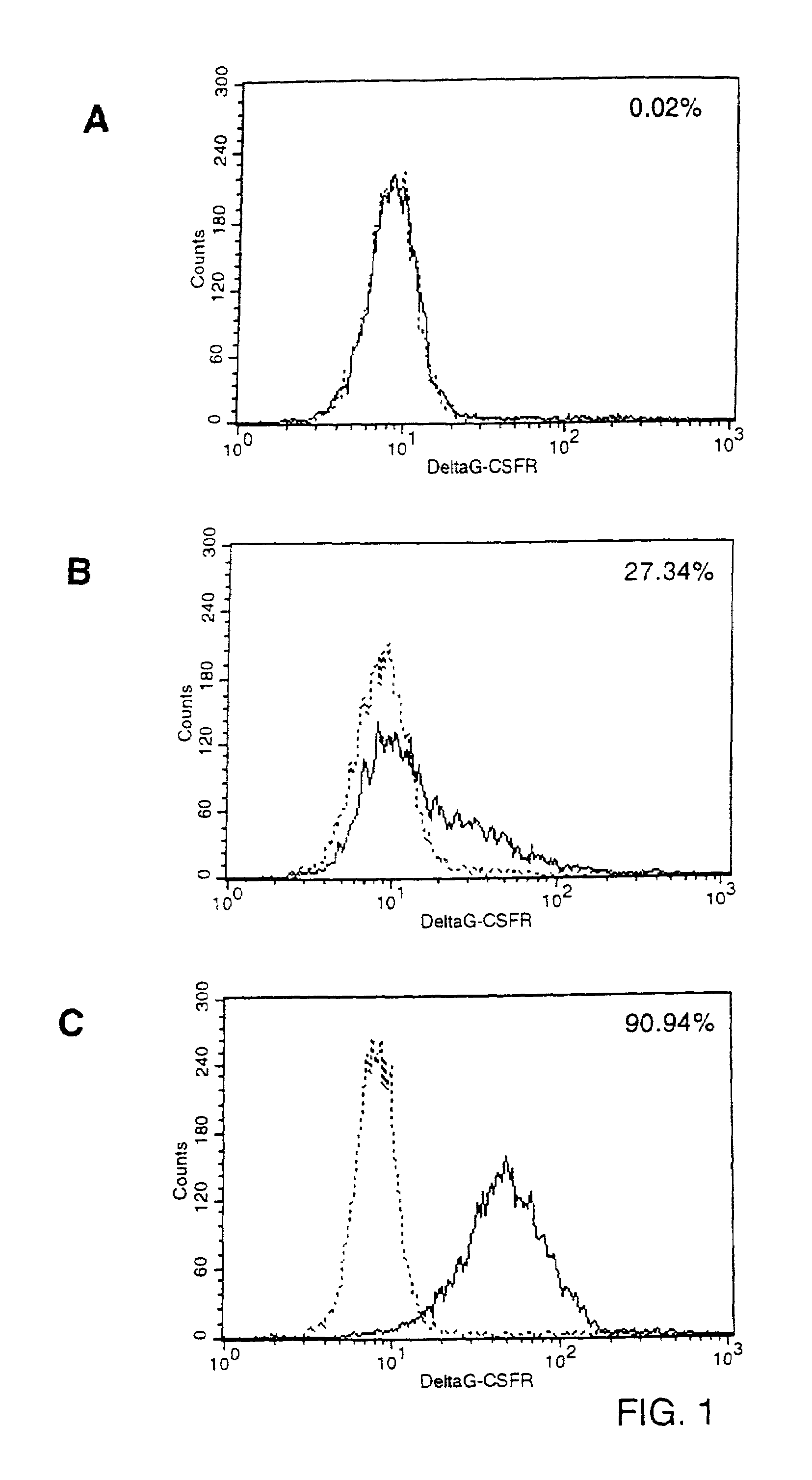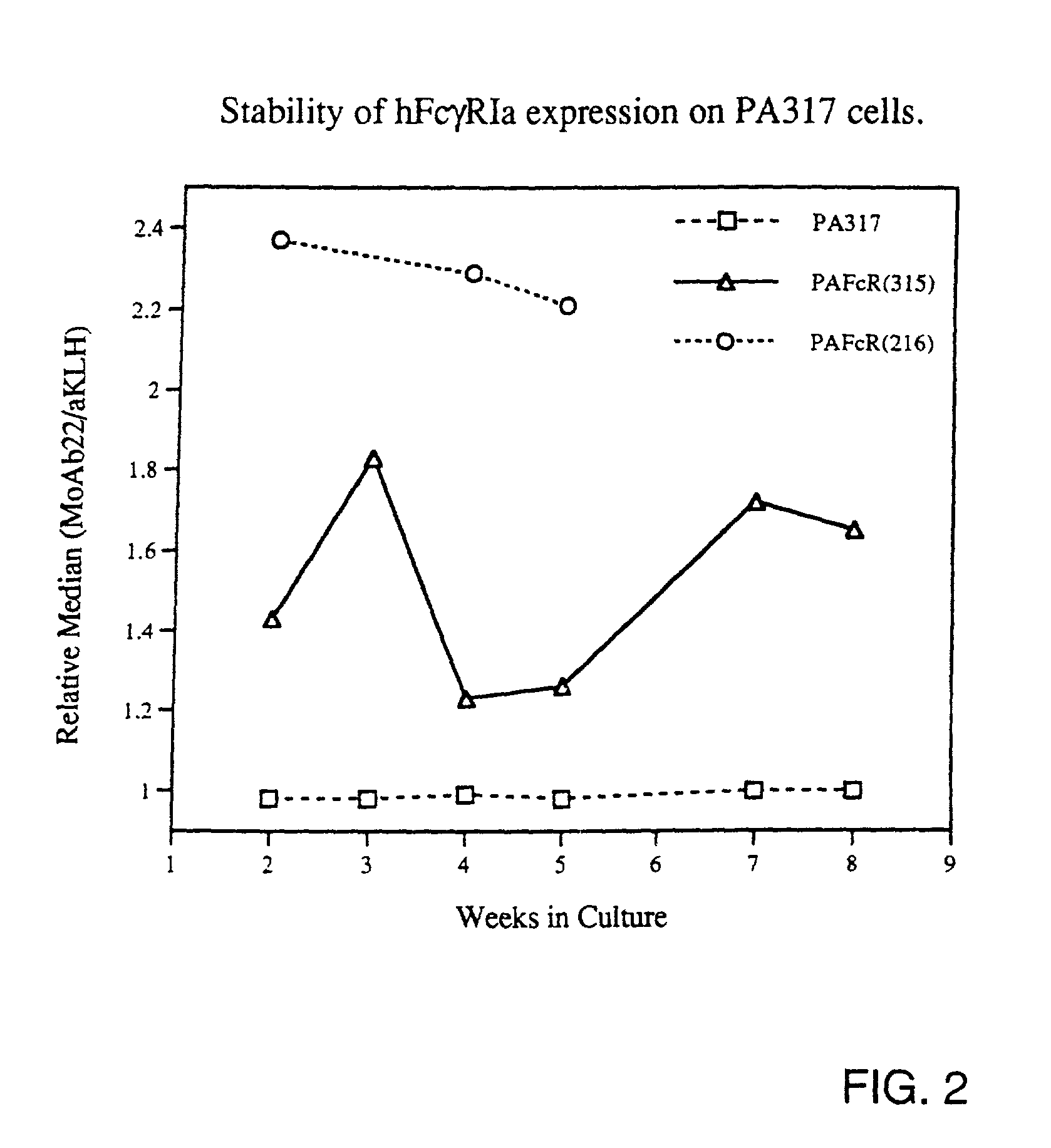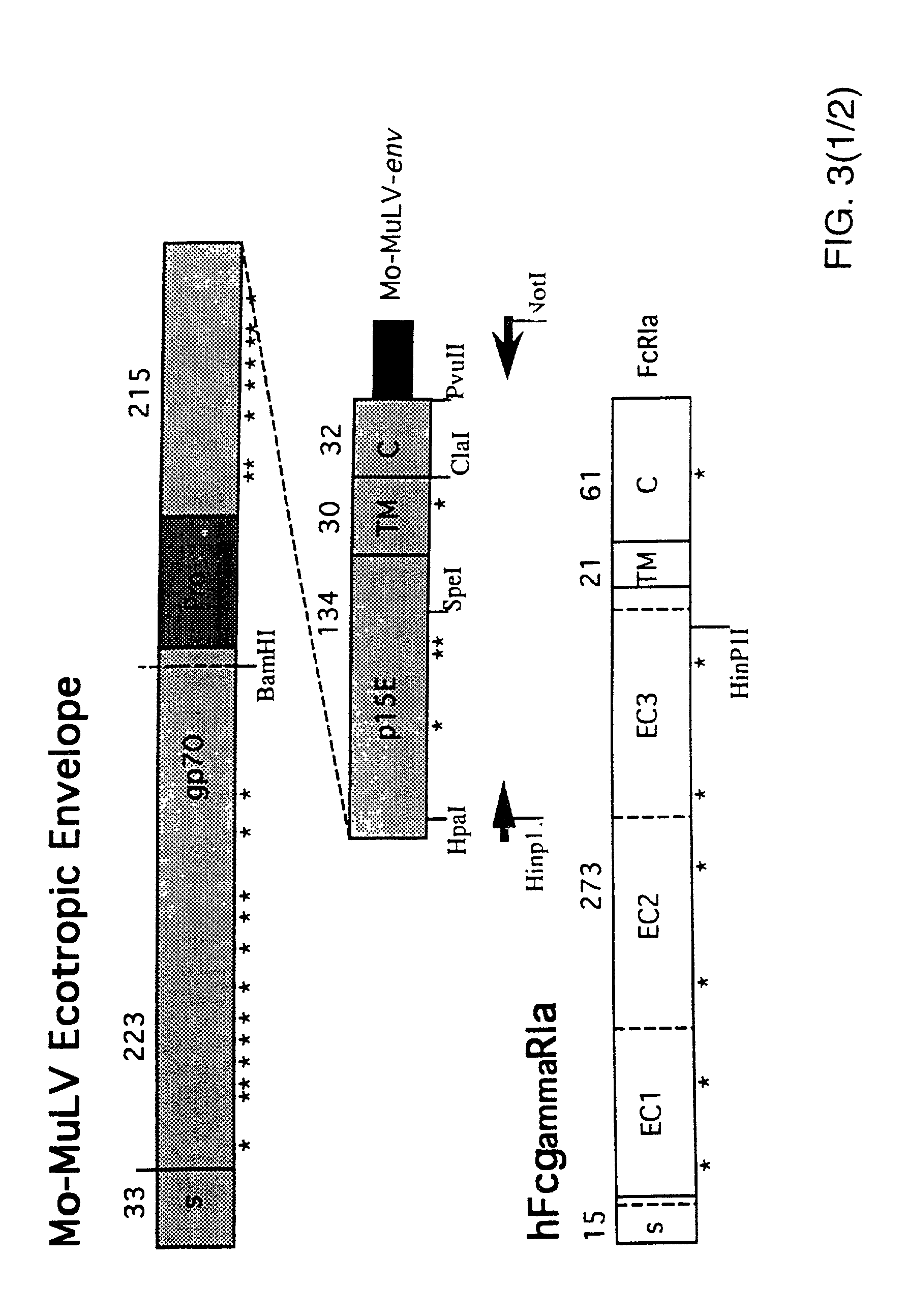Methods and means for targeted gene delivery
a gene delivery and gene technology, applied in the direction of peptide sources, botany apparatus and processes, pharmaceutical non-active ingredients, etc., to achieve the effect of efficient introduction of foreign genetic material into non-dividing target cells
- Summary
- Abstract
- Description
- Claims
- Application Information
AI Technical Summary
Benefits of technology
Problems solved by technology
Method used
Image
Examples
example 1
Specific Binding of Biotinylated G-CSF to G-CSFR Molecules Expressed on the Surface of Mouse Fibroblasts.
[0064]To express receptors for granulocyte-colony stimulating factor (G-CSF) on the cell membrane of murine fibroblasts, PA317 cells (Miller and Buttimore, Mol. Cell. Biol. 6(1986):2895) were transduced with ecotropic LNCX / GRDcyt virus. The construct pLNCX / GRDcyt (generated in the laboratory of Dr. I. Touw, Erasmus University, Rotterdam, NL) was made by inserting the cDNA sequence for a mutant G-CSF receptor (DG-CSFR) into pLNCX (Miller and Rosman, BioTechniques 7(1989):980). DG-CSFR differs from the wild-type molecule by an almost complete deletion of the intracellular domain, rendering the receptor incapable of signal-transduction. The extracellular and trans-membrane domains of DG-CSFR are of wild-type structure. DG-CSFR exhibits, therefore, normal binding capacity for its cytokine ligand. Transduced PA317 cells were isolated by selecting for resistance to 1 mg / ml G418 (Geneti...
example 2
Generation of Recombinant Retrovirus Packaging Cell Lines Expressing hFcgRIa Proteins on Their Cell Membrane.
[0065]For expression of functional hFcgRIa on the surface of retrovirus packaging cell lines, the construct pRc / CMV-hFcgRIa was used. This construct was generated by inserting a 1.3 kb HindIII-NotI fragment including the full-length p135 hFcgRIa-cDNA sequence (Allen and Seed, Science 243(1989):378; GenBank accession number M21090) from clone CDM into the polylinker of pRc / CMV. Twenty microgram pRc / CMV-hFcgRIa was transfected onto the ecotropic packaging cell line GP+E-86 (Markowitz et al., J. Virol. 62(1988):1120) and onto the amphotropic packaging cell line PA317, according to the method described by Chen and Okayama (Mol. Cell. Biol. 7(1987):2745). Transfectants were selected for resistance to 1 mg / ml G418, conferred by expression of the SV40pr-neor-p(A) cassette on the pRc / CMV-hFcgRIa construct. Pools of resistant cells were analyzed for hFcgRIa expression on a FACS, after...
example 3
Immunoglobulin Binding by hFcgRIa Proteins Expressed on the Cell Membrane of Recombinant Retrovirus Packaging Cell Lines
[0072]To test whether hFcgRIa expressed on the surface of retrovirus packaging cells is capable of specific immunoglobulin-Fc binding, PAFcR sorted-315 cells were incubated with irrelevant mouse immunoglobulins of IgG1 or IgG2a isotype. FcgRI molecules should bind IgG2a molecules with high affinity and IgG1 molecules with low affinity. As can be seen in table 4, approximately one third of the sorted cells were expressing low amounts of hFcgRIa, as indicated by MoAb22-staining with low relative median signal. All hFcgRIa molecules on PAFcR cells also bound mouse IgG2a (similar percentage positive cells and signal intensity), whereas mouse IgG1 was hardly bound. On human primary monocytes, which were used as a positive control, hFcgRIa molecules were strongly expressed and specifically bound mouse IgG2a immunoglobulins. The capacity of hFcgRIa molecules on monocytes ...
PUM
| Property | Measurement | Unit |
|---|---|---|
| Fraction | aaaaa | aaaaa |
| Fraction | aaaaa | aaaaa |
| Fraction | aaaaa | aaaaa |
Abstract
Description
Claims
Application Information
 Login to View More
Login to View More - R&D
- Intellectual Property
- Life Sciences
- Materials
- Tech Scout
- Unparalleled Data Quality
- Higher Quality Content
- 60% Fewer Hallucinations
Browse by: Latest US Patents, China's latest patents, Technical Efficacy Thesaurus, Application Domain, Technology Topic, Popular Technical Reports.
© 2025 PatSnap. All rights reserved.Legal|Privacy policy|Modern Slavery Act Transparency Statement|Sitemap|About US| Contact US: help@patsnap.com



